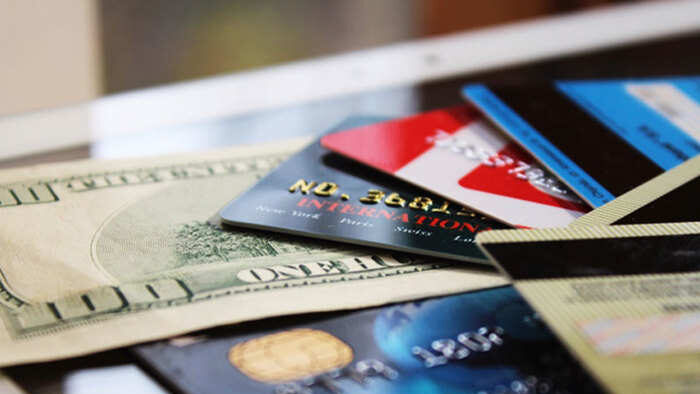Credit cards are a widely-used financial tool that provides convenience, security, and flexibility in managing personal expenses. Among the many features of a credit card, the ability to withdraw cash directly from an ATM, known as a cash advance, stands out as a quick solution for urgent cash needs. However, withdrawing cash using a credit card comes with specific costs and risks that individuals must understand before relying on this feature.
This guide explores the benefits, drawbacks, and key considerations of accessing cash from credit cards, offering readers a comprehensive understanding of this financial service.
What is a Credit Card Cash Advance?
A credit card cash advance allows cardholders to withdraw cash from their credit limit through an ATM or a bank. This service is available for emergencies when cash is needed, and it’s as simple as using a debit card at an ATM. However, unlike a debit card, the cash withdrawn is essentially a short-term loan that comes with additional charges and higher interest rates.


How Does It Work?
- ATM Withdrawal:
- Insert your credit card into an ATM.
- Enter your PIN (Personal Identification Number).
- Choose the cash advance option and enter the desired amount (up to the cash advance limit).
- Withdraw the cash.
- Over-the-Counter Withdrawal:
Some banks allow cash advances directly through a branch. Cardholders can present their credit card and ID at the counter to withdraw cash. - Online Transfers:
Certain credit cards allow users to transfer a portion of their credit limit directly to their bank account as a cash advance. This can be done through the bank’s online portal or mobile app.
Benefits of Using a Credit Card for Cash Advances
- Immediate Access to Cash:
Credit card cash advances provide a quick solution in emergencies, such as medical expenses or urgent travel needs. - No Application Process:
Unlike personal loans or payday loans, cash advances do not require a lengthy application or approval process. Cardholders can access funds instantly. - Widespread Availability:
Cash advances are accessible through ATMs and banks globally, making them a convenient option for travelers. - No Need for Collateral:
Since a credit card cash advance is unsecured, cardholders don’t need to provide any collateral to access funds.
Drawbacks of Cash Advances
While cash advances offer convenience, they come with significant costs and risks that must be carefully considered:
- High Interest Rates:
- Cash advances typically incur higher interest rates than regular credit card purchases. These rates can range from 25% to 40% annually, depending on the card issuer.
- No Grace Period:
- Unlike regular credit card purchases, cash advances do not have a grace period. Interest begins to accrue immediately after the withdrawal.
- Transaction Fees:
- Most credit card issuers charge a cash advance fee, which is typically a percentage of the amount withdrawn (e.g., 2% to 5%) or a fixed minimum fee.
- Lower Withdrawal Limits:
- The cash advance limit is usually lower than the total credit limit. Cardholders may find the amount insufficient for large expenses.
- Impact on Credit Score:
- Excessive cash advances can increase credit utilization rates, which may negatively affect credit scores.
- Potential Debt Cycle:
- The combination of high interest rates and fees can lead to a cycle of debt if the borrowed amount is not repaid promptly.
Key Considerations Before Taking a Cash Advance
- Understand the Costs:
Review your credit card’s terms and conditions to understand the applicable fees, interest rates, and limits for cash advances. - Evaluate Alternatives:
Explore other financial options, such as personal loans, payday advances, or borrowing from friends or family. These alternatives may offer lower costs and more manageable repayment terms. - Use for Emergencies Only:
Cash advances should be reserved for genuine emergencies due to their high cost. - Repay Promptly:
Minimize interest charges by repaying the cash advance as quickly as possible. - Monitor Credit Utilization:
Keep your credit utilization rate low to avoid negatively impacting your credit score.
How to Minimize the Costs of Cash Advances
If you decide to use a cash advance, consider these tips to reduce the financial impact:

- Withdraw Only What You Need:
Avoid withdrawing more than necessary to keep fees and interest charges low. - Choose the Right Credit Card:
Some credit cards offer lower interest rates or waived cash advance fees. Compare card options to find the most cost-effective choice. - Avoid Frequent Withdrawals:
Limit the frequency of cash advances to prevent accumulating excessive debt. - Set a Repayment Plan:
Create a plan to repay the cash advance within a short period to minimize interest accrual.
Alternatives to Credit Card Cash Advances
Before opting for a cash advance, consider these alternatives:
- Personal Loans:
Personal loans often come with lower interest rates and more flexible repayment terms. - Overdraft Protection:
If you have a bank account with overdraft protection, this may be a less expensive option than a credit card cash advance. - Salary Advances:
Some employers offer salary advance programs that allow employees to access a portion of their paycheck early. - Peer-to-Peer Lending:
Online platforms connect borrowers with lenders, offering an alternative to traditional financial institutions.
The Role of Financial Planning
Cash advances are a temporary financial solution and should not replace long-term financial planning. Building an emergency fund, managing expenses, and maintaining a healthy credit score are essential to avoid reliance on high-cost borrowing options.
Conclusion
Withdrawing cash from a credit card can be a lifesaver in emergencies, but it’s crucial to approach this option with caution. Understanding the associated costs, risks, and repayment requirements is essential to make informed financial decisions. While cash advances offer convenience, they should be used sparingly and only as a last resort.
By evaluating alternatives and prioritizing financial planning, individuals can reduce their reliance on costly borrowing methods and achieve greater financial stability in the long term.
Do follow Uae stories for more Updates
Kris Fade and His First Wife: A Look into the Personal Life of a Radio Icon














